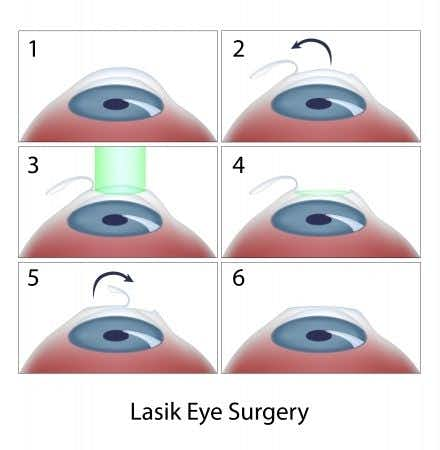This case involves a thirty-four-year-old patient with very good vision, although nearsighted, who underwent LASIK surgery on both eyes as soon as he was cleared by the ophthalmologist. However, in the following weeks, the quality of the patient’s vision began to decrease, and he visited a cornea specialist. He complained about vision problems and was developing headaches. Before arriving at the cornea specialist, the patient had complained that he could not see properly, and experienced moments of double vision. The specialist performed keratoplasties on the patient’s eyes to replace both corneas, and from there he developed cataracts. The patient developed a cloudy lens, and could no longer continue work in the construction industry due to his lack of vision. Additionally, he developed a strong sensitivity to light, which prevented him from driving and operating heavy machinery. His newly developed cataracts required further surgeries to remove the clouded lens, and replace them with an intraocular lens. The surgeon who performed the cataract surgery noticed in the report that the patient had suffered from keratoconus. The surgeon performed the cataracts surgery but had recommended further evaluation of the patient’s eyes, as he recommended another ophthalmologist to give his opinion.
Question(s) For Expert Witness
1. Is there a deviation from the standard of care in the LASIK surgery?
Expert Witness Response
There appears to be a clear deviation from the standard of care regarding this patient's LASIK surgery. LASIK surgery must abide by very strict guidelines regarding patient qualification. If the patient is suffering from keratoconus, which is a degenerative disorder which causes the eye to form a cone-like shape, he does not qualify for LASIK surgery. The keratoconus should have been recognized through an irregular astigmatism. Additionally, his nearsightedness should have, in my opinion, provided a clear diagnosis. Additional tests, such as a simple eye exam, may have revealed problems such as double vision, lights streaking, and other warning signs. The keratoconus could have been treated with new glasses, or in a last resort effort, a cornea transplant. The patient did receive the cornea transplant but under adverse circumstances. All of these problems could have been avoided, had the ophthalmologist not performed the LASIK surgery.
About the author
Dr. Faiza Jibril
Dr. Faiza Jibril has extensive clinical experience ranging from primary care in the United Kingdom, to pediatrics and child abuse prevention at Mount Sinai Hospital, to obstetrics in Cape Town, South Africa. Her post-graduate education centered on clinical research and medical ethics. Dr. Jibril is currently Head of Sales in the US and Canada for Chambers and Partners - a world leading legal ranking and insights intelligence company.



